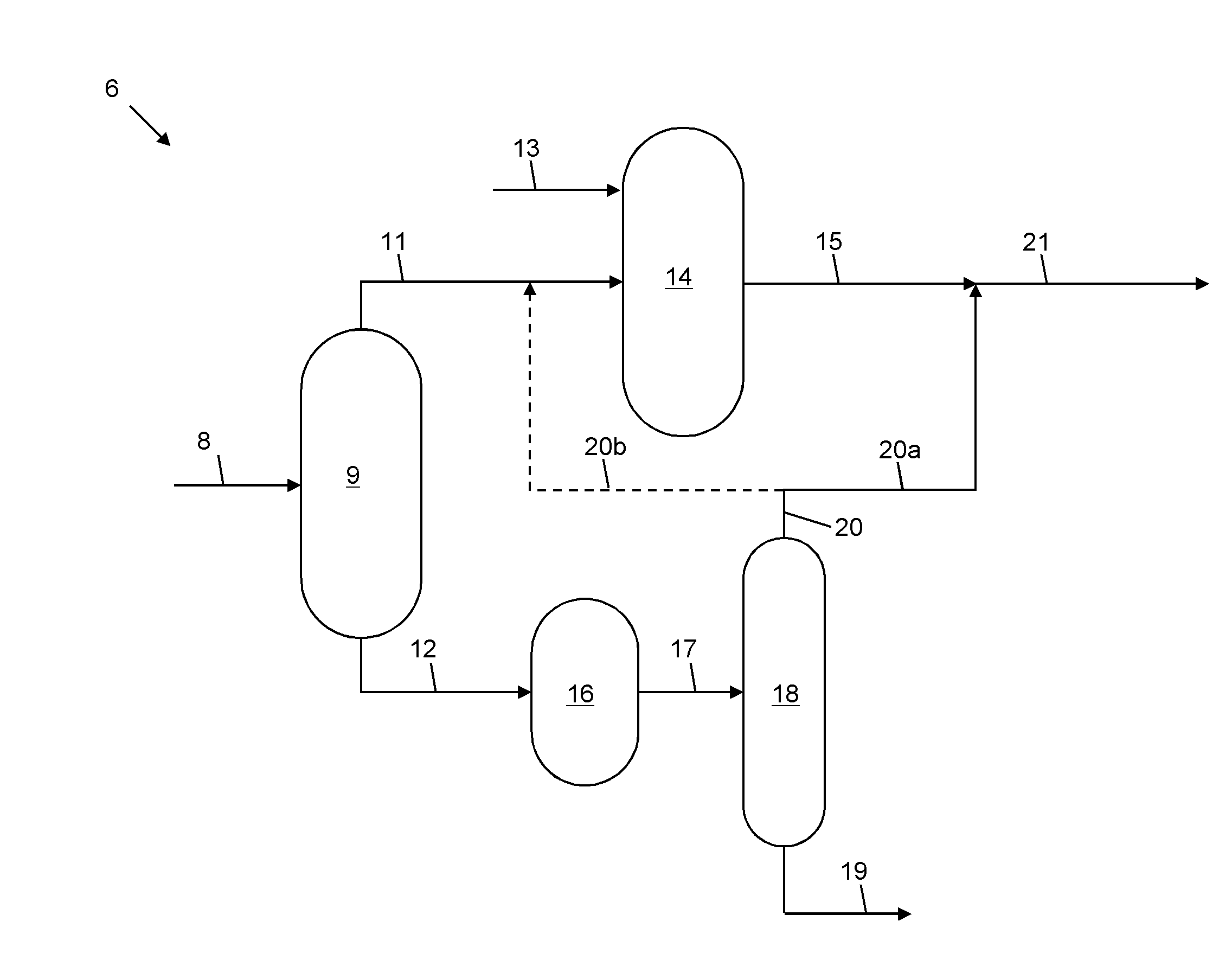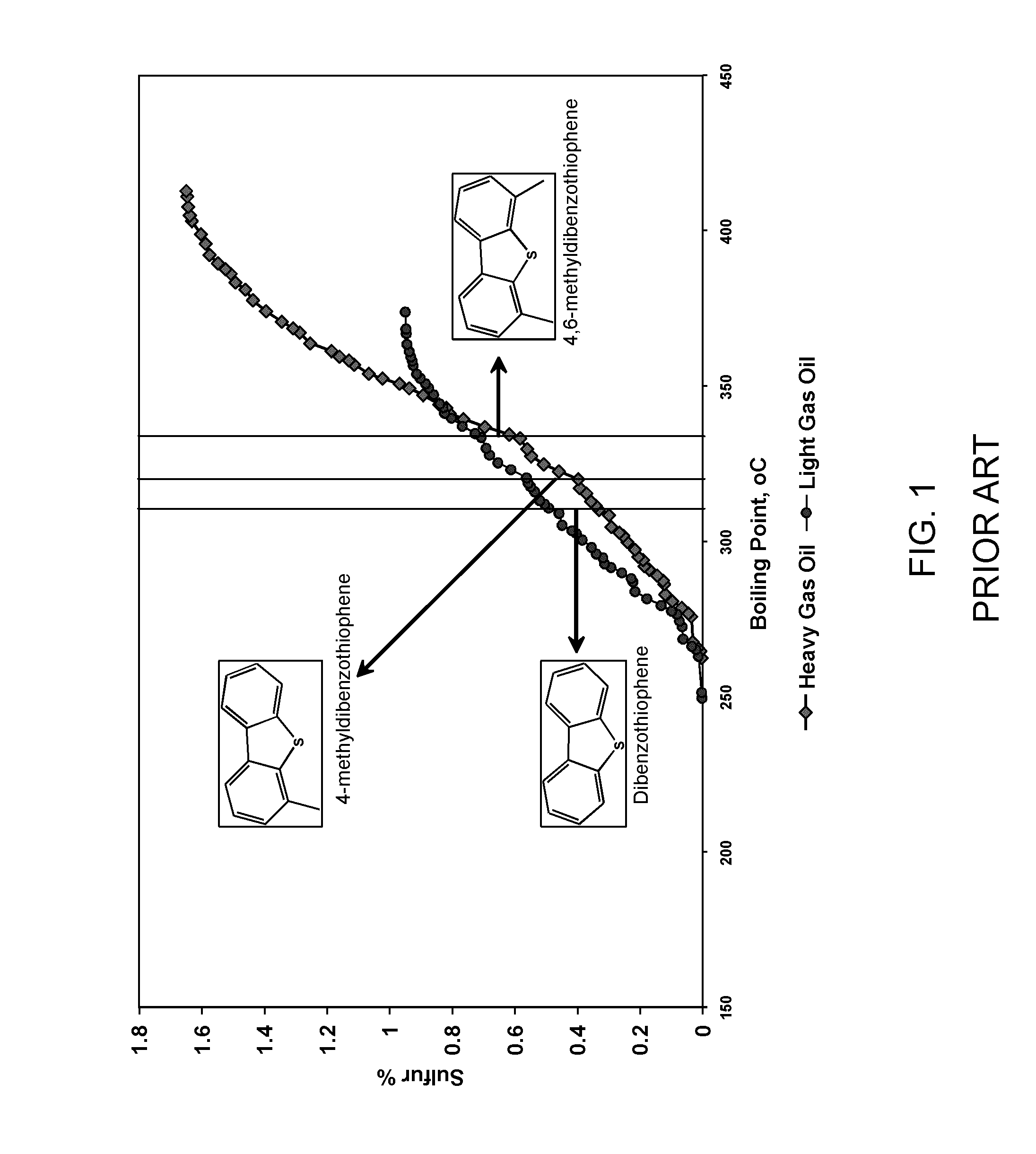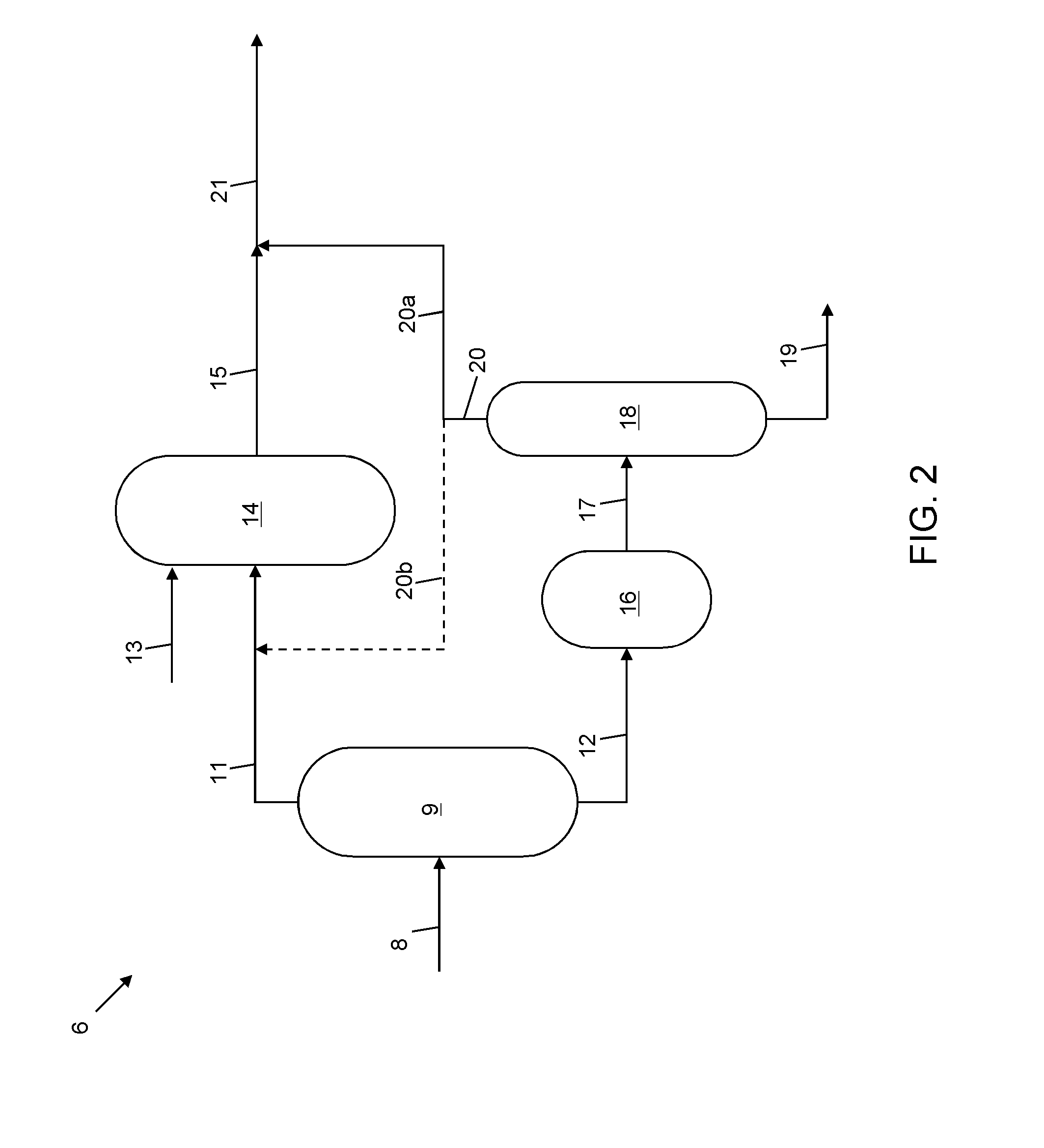Targeted desulfurization process and apparatus integrating gas phase oxidative desulfurization and hydrodesulfurization to produce diesel fuel having an ultra-low level of organosulfur compounds
- Summary
- Abstract
- Description
- Claims
- Application Information
AI Technical Summary
Benefits of technology
Problems solved by technology
Method used
Image
Examples
example 1
[0071]A gas oil was fractionated in an atmospheric distillation column to split the gas oil into two fractions: a light gas oil fraction (LGO) that boils at 340° C. and less with 92.6 W % yield and a heavy gas oil fraction (HGO) that boils at 340° C. and higher with 7.4 W % yield were obtained. The LGO boiling 340° C. or less, the properties of which are given in Table 4, was subjected to hydrodesulfurization in a hydrotreating vessel using an alumina catalyst promoted with cobalt and molybdenum metals at 30 Kg / cm2 hydrogen partial pressure at the reactor outlet, weighted average bed temperature of 335° C., liquid hourly space velocity of 1.0 h−1 and a hydrogen feed rate of 300 L / L. The sulfur content of the gas oil was reduced to 10 ppmw from 6,250 ppmw.
TABLE 4Properties of Gas Oil, LGO and HGOUnitGas OilLGOHGOYieldW %10092.67.4SulfurW %0.720.6251.9Densityg / cc0.820.8140.885ASTM D86Distillation 5%° C.13815033210%° C.16617333830%° C.21821734750%° C.25324435570%° C.28227236390%° C.317...
examples 2-13
[0074]Examples 2-13 are provided which describe methods to make the gaseous oxidative desulfurization catalyst material (2-12) and tests using those catalysts (13).
example 2
[0075]37.5 g of Cu(NO3)2 (0.2 moles), 13.3 g of Zn(NO3)2 (0.07 moles) and 50.1 g of Al(NO3)3 (0.235 moles) were dissolved in 500 ml of distilled water, to form what shall be referred to as “solution A” hereafter. The pH of the solution was 2.3.
[0076]Similarly, 19.08 g of Na2CO3 (0.18 moles) and 36 g of NaOH (0.9 moles) were dissolved in 600 ml of distilled water, to produce “solution B,” which had a pH of 13.7.
[0077]Solution A was heated to 65° C. and solution B was added to solution A at a rate of about 5 ml / minute with constant agitation, until all of solution B was added. The resulting mixture had a pH of 11.0. A precipitate formed which was aged for 6 hours at 65° C. The solution was cooled to room temperature and filtered with a Buchner funnel. Precipitate was washed with distilled water. Analysis of the precipitate showed that nearly all (about 99%) of the Cu, Zn and Al precipitated out of the solution.
[0078]The precipitate was then dried at 110° C. for 12 hours. The dried mat...
PUM
| Property | Measurement | Unit |
|---|---|---|
| Temperature | aaaaa | aaaaa |
| Temperature | aaaaa | aaaaa |
| Temperature | aaaaa | aaaaa |
Abstract
Description
Claims
Application Information
 Login to View More
Login to View More - R&D
- Intellectual Property
- Life Sciences
- Materials
- Tech Scout
- Unparalleled Data Quality
- Higher Quality Content
- 60% Fewer Hallucinations
Browse by: Latest US Patents, China's latest patents, Technical Efficacy Thesaurus, Application Domain, Technology Topic, Popular Technical Reports.
© 2025 PatSnap. All rights reserved.Legal|Privacy policy|Modern Slavery Act Transparency Statement|Sitemap|About US| Contact US: help@patsnap.com



